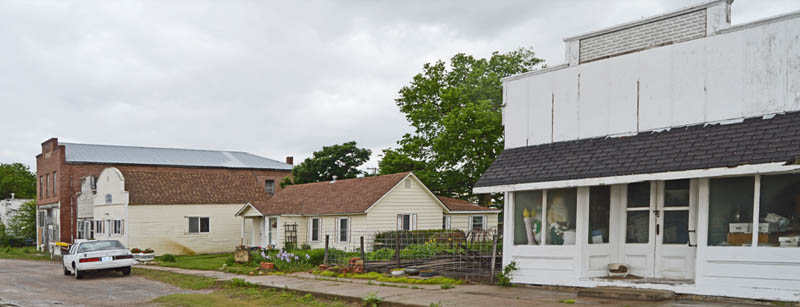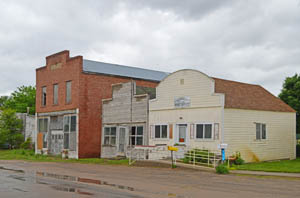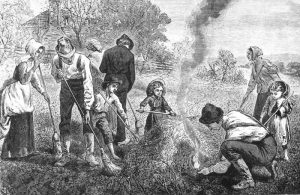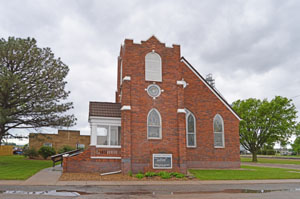Norway, Kansas -Extinct in Republic County – Legends of Kansas (original) (raw)
Norway, Kansas Main Street by Kathy Alexander.
Norway, Kansas, is a ghost town on the Republican River in Norway Township of southwest Republic County. It is also an extinct town as it no longer has a post office. However, it is a census-designated place; as of the 2020 census, the population was 17.
Business Buildings in Norway, Kansas by Kathy Alexander.
The first settler in Norway was Rasmus Rimol from Trondheim, Norway, who arrived in February 1869. He was soon followed by the rest of a Norwegian colony of ten families from Norway. The river valley and its tributary streams on the east side were nearly all settled in 1869 and 1870.
The post office was established on October 3, 1870, in J.G. McCathron’s dugout. He was the first postmaster and first justice of the peace. In 1878, it had about ten families. At that time, the community was on the St. Joseph & Denver City Railroad, from which the community shipped its grain and livestock.
The prairie on the township’s east side was settled in 1871 by a good, thrifty colony of eight families from eastern Indiana.
U.S. agents offered many inducements to settle the frontier, and in 1872, people from many states and foreign countries settled West of the river. Unfortunately, most of these settlers were poorly equipped, had little money, were poorly armed, and ignorant of the dangers of this new, primitive, and different country.
The first schoolhouse was made of native stone and built on the corner a half mile east and a mile north of Norway. It was later replaced with a good-frame building that was very comfortable and well-equipped. The school was held whenever finances permitted and teachers were available.
Grasshopper Plague in Kansas.
In 1874, the prospects were bright. However, a drought had set in by June, and temperatures were extremely high. In July, thousands of grasshoppers arrived, eating everything in an incredibly short time. No grass, corn, weeds, gardens, or leaves on the trees were left, and even the clothes on the lines were devoured. Nothing was left except people and livestock. That winter, the government provided some money to the devastated residents but not enough to be of much help. People in the East also sent all kinds of food and clothing.
The population of Norway Township was 492 in 1880.
In 1910, the community was on the Missouri Pacific Railroad. At that time, it had a money order post office, express and telegraph offices, a local retail trade, and a population of 150.
The old frame school building, northeast of Norway, was moved to town and remodeled into a two-room school. In 1914, a brick building replaced the two-room school. The two-room building was moved to the main street, remodeled and enlarged, and then served as the township hall.
In 1916, a four-year high school was established.
The high school was discontinued in the mid-1940s because of decreased attendance and increased expenses.
By 1961, Norway had an excellent grade school with an attendance of 60, three regular teachers, and a music teacher. A fine auditorium and gymnasium were built in about 1959.
The town’s population fell in the following years, and its post office closed on August 16, 2008.
Today, Norway still has an active Lutheran Church, several homes and abandoned business buildings, and an old school gymnasium.
Norway, Kansas’ Lutheran Church is still active by Kathy Alexander.
The community is served by Pike Valley USD 426 public school district in Scandia, Kansas.
It is located 16 miles southwest of Belleville and seven miles south of Scandia at Norway Lane and K-148 highway.
©Kathy Alexander/Legends of Kansas, updated October 2024.
Also See:
Extinct Towns of Republic County
An old school gymnasium in Norway, Kansas, by Kathy Alexander.
Sources:
Blackmar, Frank W.; Kansas: A Cyclopedia of State History, Vol I; Standard Publishing Company, Chicago, IL 1912.
Cutler, William G; History of Kansas; A. T. Andreas, Chicago, IL, 1883.
Gazetteer and Business Directory; Polk Directory Company, Chicago, Illinois, 1878.
Kansas Post Office History
Norway Village




